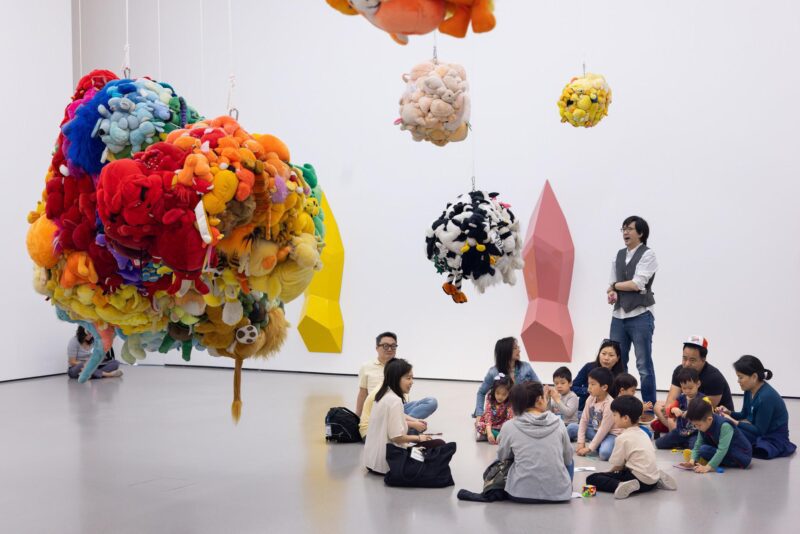As educators continue to inspire future generations with the wonders of art and creativity, the Museum of Modern Art (MoMA) in New York City has made it a priority to support these classroom heroes. To honor their dedication, MoMA offers a special discount that teachers can take advantage of, providing them with an enriching experience that not only fuels their own passion for art but also equips them with fresh insights to share with their students. This thoughtful initiative underscores the museum’s commitment to education and its crucial role in fostering an appreciation for the arts.
Full disclosure: If you visit a link on this page and make a purchase, we may receive a small commission at no extra cost to you.
MoMA is an iconic institution that houses an incredible array of modern and contemporary art, showcasing works from the late 19th century to the present day. From painting and sculpture to film and design, the museum’s vast collection includes masterpieces by Van Gogh, Matisse, and Warhol, offering visitors a comprehensive journey through the evolution of artistic expression. Beyond its impressive exhibits, MoMA also offers an array of educational programs, workshops, and resources designed to engage the public in thoughtful discussion and hands-on experiences that deepen their understanding and appreciation of modern art.
If you’re an educator eager to experience all that MoMA has to offer at a discounted rate, obtaining your teacher discount is a straightforward process. Simply present a valid school ID or a letter on official school letterhead at the museum’s ticketing desk to be eligible for reduced admission. This discount is MoMA’s way of saying ‘thank you’ to teachers for their indispensable role in shaping minds and spreading the joy of art. So whether you’re looking for fresh inspiration or seeking new educational materials to bring back to your classroom, MoMA welcomes you with open arms and celebrates the profound impact you have on your students’ lives.
Q&A
**Q&A Section: Exploring the Marvels of MoMA - The Museum of Modern Art**
**Q: What is MoMA and why is it significant in the art world?**
*A: MoMA stands for the Museum of Modern Art, residing in the heart of New York City. It’s a sanctuary of creativity and a beacon of modern and contemporary art. The museum’s significance stems from its dynamic collection that documents the ever-evolving narrative of modern art across various mediums, including painting, sculpture, photography, and film.*
**Q: When did MoMA first open its doors to the public?**
*A: The museum first welcomed art enthusiasts and the culturally curious on November 7, 1929. It was an auspicious debut, occurring just days after the stock market crash, yet it managed to thrive and cement its place in the culture of the 20th century and beyond.*
**Q: Can you describe some of the iconic pieces on display at MoMA?**
*A: Absolutely! MoMA houses an array of groundbreaking works. Highlights include Vincent van Gogh’s ‘Starry Night’, Pablo Picasso’s ‘Les Demoiselles d’Avignon’, and Salvador Dalí’s ‘The Persistence of Memory’. Visitors can also view the architectural wonders in ‘Fallingwater’ by Frank Lloyd Wright and marvel at the design intricacies of Charles and Ray Eames.*
**Q: How does MoMA contribute to the conversation of modern and contemporary art today?**
*A: MoMA doesn’t just display art; it fosters dialogue through rotating exhibitions, educational programs, and research initiatives. The museum closely collaborates with artists, historians, and curators to explore themes and ideas that challenge and expand our understanding of modern and contemporary art.*
**Q: Are there ways for people to engage with MoMA outside of visiting the New York City location?**
*A: Certainly, while there’s nothing quite like witnessing MoMA’s masterpieces in person, the museum offers digital archives, virtual tours, and an extensive online collection. Additionally, through its social media platforms, podcast, and YouTube channel, art lovers from around the globe can experience the wonders of MoMA.*
**Q: Does MoMA only exhibit works from established masters of modern art?**
*A: While the museum houses a rich array of works from renowned artists, it’s also a champion of emerging talents and contemporary voices. MoMA’s curators are dedicated to discovering and showcasing fresh perspectives that push the boundaries of what art can be.*
**Q: How often does the museum rotate its exhibitions and what can visitors expect from these temporary displays?**
*A: MoMA frequently changes its exhibitions, ensuring that each visit offers a novel experience. These temporary displays range from retrospectives of individual artists to thematic collections that cross time periods and art forms, providing deep dives into artistic movements and societal influences.*
**Q: Is there a specific philosophy or approach that guides the curating of collections at MoMA?**
*A: Yes, MoMA’s curatorial approach is rooted in a progressive ethos that celebrates innovation, diversity, and cultural relevance. The museum endeavors to strike a balance between contextualizing the historical significance of modern art and promoting the edge-cutting ideas that propel the art world forward.*
**Q: What efforts does MoMA make to be accessible to all audiences?**
*A: MoMA is committed to accessibility by offering programs tailored to different communities, including those with disabilities. With initiatives like ‘MoMA Access’, audio descriptions, sign language tours, and community engagement events, the museum strives to welcome and include a broad spectrum of visitors.*
**Q: Does the museum host any special events or activities throughout the year?**
*A: Beyond the permanent and temporary exhibitions, MoMA organizes a myriad of events including artist talks, film screenings, performance art, workshops, and educational programs for all ages. This dynamic calendar allows the public to engage with art in multifaceted ways throughout the year.*






